Polishing and buffing discs for bodywork

Car body polishing and buffing discs
-
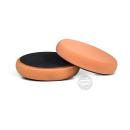 20253Orange Pad M x 2flexible 145mm x 25mm
20253Orange Pad M x 2flexible 145mm x 25mm -
 20258Orange Pad S x 1flexible 90mm x 25mm
20258Orange Pad S x 1flexible 90mm x 25mm -
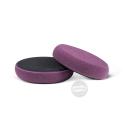 20293Purple Pad M x 2145mm x 25mm
20293Purple Pad M x 2145mm x 25mm -
 20298Purple Pad S x 190mm x 25mm
20298Purple Pad S x 190mm x 25mm -
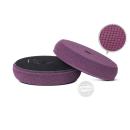 20323Spider Pad purple M x 2145mm X 25mm medium
20323Spider Pad purple M x 2145mm X 25mm medium -
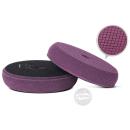 20328Spider Pad purple S x 190mm X 25mm medium
20328Spider Pad purple S x 190mm X 25mm medium -
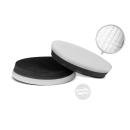 20363Spider Pad M sandwich x 2145mm x 25mm ultra cut
20363Spider Pad M sandwich x 2145mm x 25mm ultra cut -
 20368Spider Pad S sandwich x 190mm x 25mm ultra cut
20368Spider Pad S sandwich x 190mm x 25mm ultra cut -
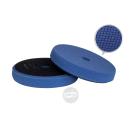 20373Spider Pad navy blue M x 2145mm x 25mm hard
20373Spider Pad navy blue M x 2145mm x 25mm hard -
 20378Spider Pad navy blue S x 190mm x 25mm hard
20378Spider Pad navy blue S x 190mm x 25mm hard -
 22607CleaningPuck purple x 2130mm x 50mm wash pdts
22607CleaningPuck purple x 2130mm x 50mm wash pdts
︾
Polishing foam and polishing and buffing discs for bodywork:
These foam discs will allow you to polish your bodywork, to give it an exceptional shine. Foam discs from 3M and 4CR are available at competitive prices from the Carross online shop.
How do you choose a polishing disc for your car or motorbike repairs?
Choosing the right polishing disc is an important step before carrying out any work on your vehicle. The choice of disc can depend on several criteria:
- The diameter of the plate on your polisher
- The type of professional polisher you use
- The material of the polishing or buffing disc
Bodywork polishing and buffing discs are essential accessories when using polishing machines to improve the appearance of a vehicle's paintwork. These discs are designed for use with orbital polishers or rotary polishers, offering different features to meet specific polishing and buffing needs. The following is a description of commonly used polishing and buffing discs:
Polishing discs :
Foam pads :
Materials: Foam pads are among the most popular. They are available in different densities (light, medium, firm) to suit different stages of the polishing process.
Function: Foam pads are used with polishing compounds to remove paint imperfections. They offer good absorption capacity and reduce the risk of hologram formation.
Wool pads :
Materials: Wool pads are more aggressive than foam pads and are used for initial polishing on badly damaged surfaces.
Function: They are effective for removing serious imperfections, but require a certain amount of experience to avoid damaging the paint.
Buffing discs :
Finishing foam pads :
Materials: These foam pads are softer than those used for polishing. They are often black or blue to indicate a softer foam.
Function: Finishing foam pads are used with polishing products to refine the surface, remove micro-scratches and improve shine.
Microfibre pads :
Materials: Microfibre pads are designed to polish paint effectively.
Function: They are excellent at removing product residues, leaving a smooth, shiny surface. They are particularly effective with modern polishes.
Tips for using polishing and buffing discs:
Selecting the pad:
Choose the pad according to the task in hand. More aggressive pads are used at the beginning of the polishing process, while softer pads are used for finishing.
Product compatibility:
Make sure the pad is compatible with the polishing or buffing product you are using. Some products may require specific pads to achieve the best results.
Pad care:
Clean the pads regularly during the polishing process to avoid residue build-up. Some foam pads can be washed and reused.
Application technique:
Use slow, even strokes to avoid circular marks or holograms. Working on small sections at a time helps to control the process.
To sum up, polishing and buffing discs are essential tools for achieving professional results when polishing a vehicle's bodywork. The right choice of pads, combined with the right technique, can transform the appearance of paintwork to reveal a smooth, shiny surface.
Our range of technical products for your finishing work:
Cloths, skins, foams, hand pads and trays are important accessories in the process of polishing and buffing a vehicle's bodywork. They are used in conjunction with polishers or buffers to apply, distribute and remove polishing and buffing products. The following is a description of each of these accessories:
1. Cloths and skins :
Microfibre cloths :
Materials: Microfibre cloths are made from very fine synthetic fibres.
Function: They are ideal for wiping residues from polishing and buffing products, offering excellent absorption and preventing scratching.
Chamois leather :
Materials: Chamois leather is generally made from sheepskin or goatskin.
Function: They are used to wipe off water and polish, leaving a smooth, shiny finish on the bodywork.
2. Foam polishers :
Foam buffing pads :
Materials: Foam pads are made from foam of different densities.
Function: They are used to apply polishing products. Finishing foams are often softer to achieve maximum shine.
3. Manual pads :
Manual foam or microfibre pads:
Materials: They can be made of foam or microfibre, depending on the application.
Function: Manual pads are used to manually apply polishing or buffing products to hard-to-reach areas or for localised correction.
4. Pads for polishers :
Polisher platens :
Materials: The platens are generally made of plastic or metal and can be fitted with Velcro to secure the pads.
Function: The platens are mounted on the polishing or buffing machine and act as a support for the pads. They ensure even pressure distribution.
Tips for using these accessories :
Care: Wash microfibre cloths and chamois regularly to remove residues and maintain their effectiveness. Foam pads should be cleaned after each use to extend their life.
Compatibility: Make sure the pads, foams and trays are compatible with the polishing or buffing machine you are using. Some models require specific accessories.
Storage: Store cloths and skins in a clean, dry place. Foam pads should be stored flat to avoid distortion.
Rotating pads: To avoid residue build-up and extend the life of pads, rotate or replace them regularly.
To sum up, choosing the right cloths, skins, foams, hand pads and platens is crucial to achieving optimum results when polishing and buffing a body. Proper care of these accessories helps to maintain their performance and extend their life.
Hard, medium or soft, how do you choose your polishing disc or foam?
The differences in hardness between the foams and discs used in the process of polishing and buffing a vehicle's bodywork are crucial to achieving optimum results. Foams and discs can be classified into hardness categories, ranging from hard to soft. Here's how hardness affects the polishing process:
1. Hard foams/disks :
Hardness: Foams or hard discs have a firmer surface.
Application: They are used for more aggressive stages of the polishing process, for example, when removing larger defects or correcting deep scratches.
Benefits: Hard foams are effective for removing serious paint imperfections. They can also be used for initial polishing.
2. Medium foams/discs :
Hardness: Medium hard foams or discs are a versatile option.
Application: They are often used in the intermediate stages of the polishing process, removing less serious defects and preparing the surface for the final polishing stages.
Advantages: Medium-hard foams offer a good balance between correction and finishing. They are versatile and suitable for a variety of applications.
3. Flexible foams/discs :
Hardness: Soft foams or discs have a softer surface.
Application: They are used for finishing steps, applying polishing or protective products to achieve maximum shine.
Advantages: Flexible foams are designed to minimise the risk of marking or altering the paintwork. They are ideal for the final stages of the polishing process.
Important advice:
Progression of hardness: It is common to start with harder foams for the initial correction stages, then move on to softer foams for the finishing stages. This reduces the risk of marking and ensures a smoother finish.
Compatibility: Make sure the hardness of the foam or disc is compatible with the polishing or buffing product you are using. Some products may require a specific foam for best results.
Pad rotation: Rotate the pads regularly to avoid residue build-up and to ensure even wear.
In summary, the hardness of the foams and discs plays a crucial role in the polishing process, allowing the level of aggressiveness to be tailored to the specific needs of correcting and finishing the bodywork paintwork.